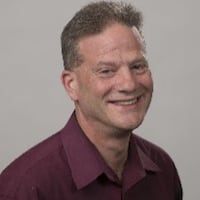Calvary would become the first cemetery in Montgomery County and the fifth in the state - including two others in the Dayton area - to offer natural burials, said Mark Funke, president of the Ohio Cemetery Association
Preble Memory Gardens Cemetery last year became the first cemetery in the Dayton area to be certified by the Green Burial Council to do a form of human disposition that is designed to be better for the environment, conserve natural resources and preserve habitats. Glen Forest Cemetery in Yellow Springs is the other area site offering green burials, Funke said.
The Calvary Cemetery Association is launching the St. Kateri Preserve, a five-year conservation project that will include natural burial areas, walking trails and a 1.6-acre lake at the southern portion of the 210-acre cemetery, located at 1625 Calvary Ave. off of Kettering Boulevard, officials said.
The preserve - named for Kateri Tekakwitha, a Mohawk Indian and Catholic patron saint of the environment and ecologist - stands out from other Ohio cemeteries because it offers “a natural preserve in an urban setting,” said Rick Meade, Calvary superintendent.
Green burials typically use natural chemicals during embalming and biodegradable containers for burials.
“Now there is a growing knowledge and trend around the country,” said Meade, noting the initial investment is about $250,000. “We definitely live in an environment of conservation and now this definitely has some appeal.”
The 142-year-old Catholic cemetery is working with the University of Dayton on the project.
The preserve will be “consistent with our calling to be a participant in critical processes of the Earth,” according to Brother Donald Geiger, a U.D. botanist. “The choice supports our desire to contribute to the preservation of the earth and restoration of the interment site to contribute to the natural beauty and function of a prairie ecosystem.”
Calvary will offer full-body burials and cremated remains in biodegradable containers, Meade said. The Catholic faith does not allow scattered remains, he added.
About 1,000 plots will be immediately available, Meade said. A total number of the plots available at the preserve will be determined after the land is surveyed, a project set to be completed next month, said Karla Hollencamp, a marketing and communications consultant for Calvary.
The preserve will be built in three phases. The first phase, which will be completed this year, will include the lake and a prairie, Meade said. The two other phases are “works in progress,” and will be completed based on demand, likely within 10 years, he said.
About the Author
